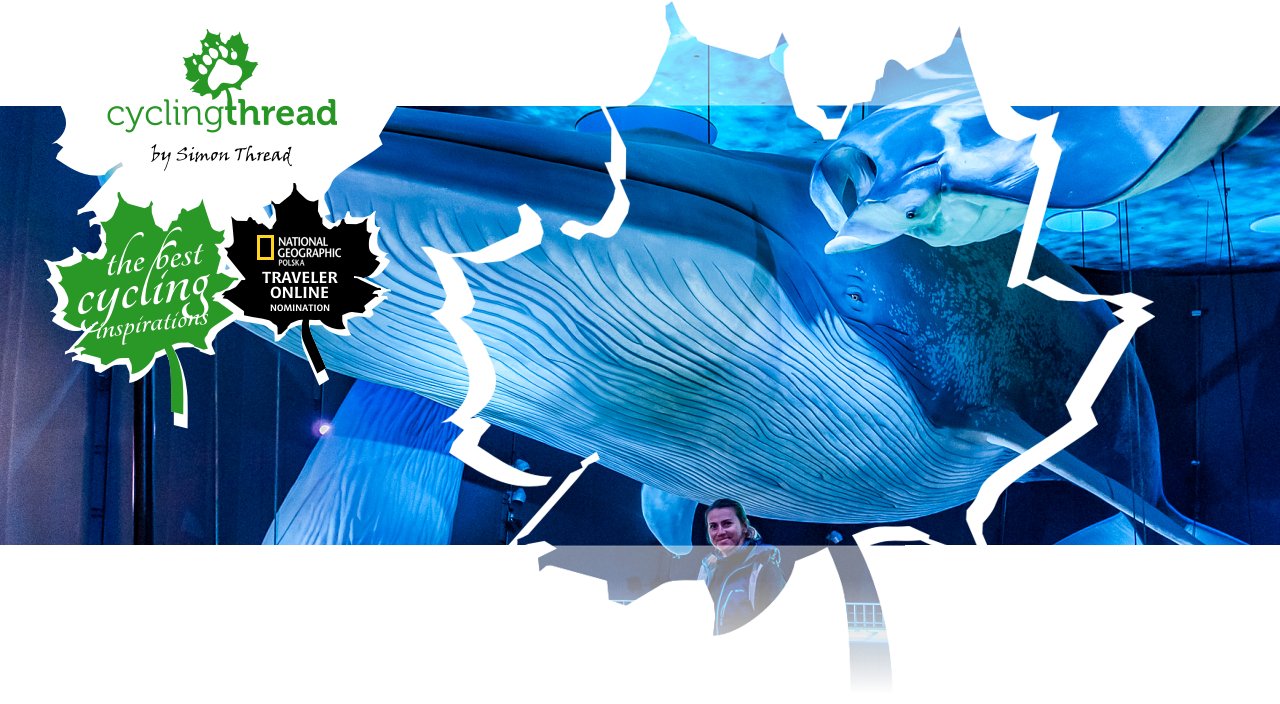
Baltic Sea Coast Cycle Route - EuroVelo 10 in Germany
In early May, we finally took our long-awaited cycling trip along the Baltic coast in Germany - on the Ostseeküstenradweg, a section of EuroVelo 10. Riding on smooth bike paths and following the footsteps of the medieval Hanseatic League, we passed through fields of blooming rapeseed with the Baltic Sea on the horizon and panniers filled with marzipan treats. Our route took us from Lübeck through Wismar and Rostock all the way to Stralsund. Along the way, we became convinced that Germany’s Baltic Sea Cycle Route could be a model for local authorities across Europe when planning new cycling routes.
Route on the map
GPX file (GPS track): cyclingthread.com-baltic-sea-2017.gpx
Baltic Sea Cycle Route - table of contents
- EuroVelo 10 - the Baltic Sea Coast route
- Lübeck - that's the Hanseatic League!
- The nomination for European Museum of the Year
- Backsteingotik - brick Gothic in northern Germany
- Impressive interiors of Gothic churches
- In Europe's marzipan capital
- Lübeck, the city of three Nobel laureates
- A unique farewell to Lübeck
- A sunny welcome from the Baltic Sea
- The cycling route crosses the Iron Curtain
- A perfect seaside vibe along the way
- Wismar - a Hanseatic gem on the UNESCO list
- Fish in a bun, fresh off the boat
- Bike-friendly stays with Bett+Bike
- In Rostock, the real charm is in Warnemünde
- The homeland of wicker beach chairs
- Beautiful Stralsund to wrap things up
- EuroVelo 10 in Poland too
- Cycling harmony, the German way
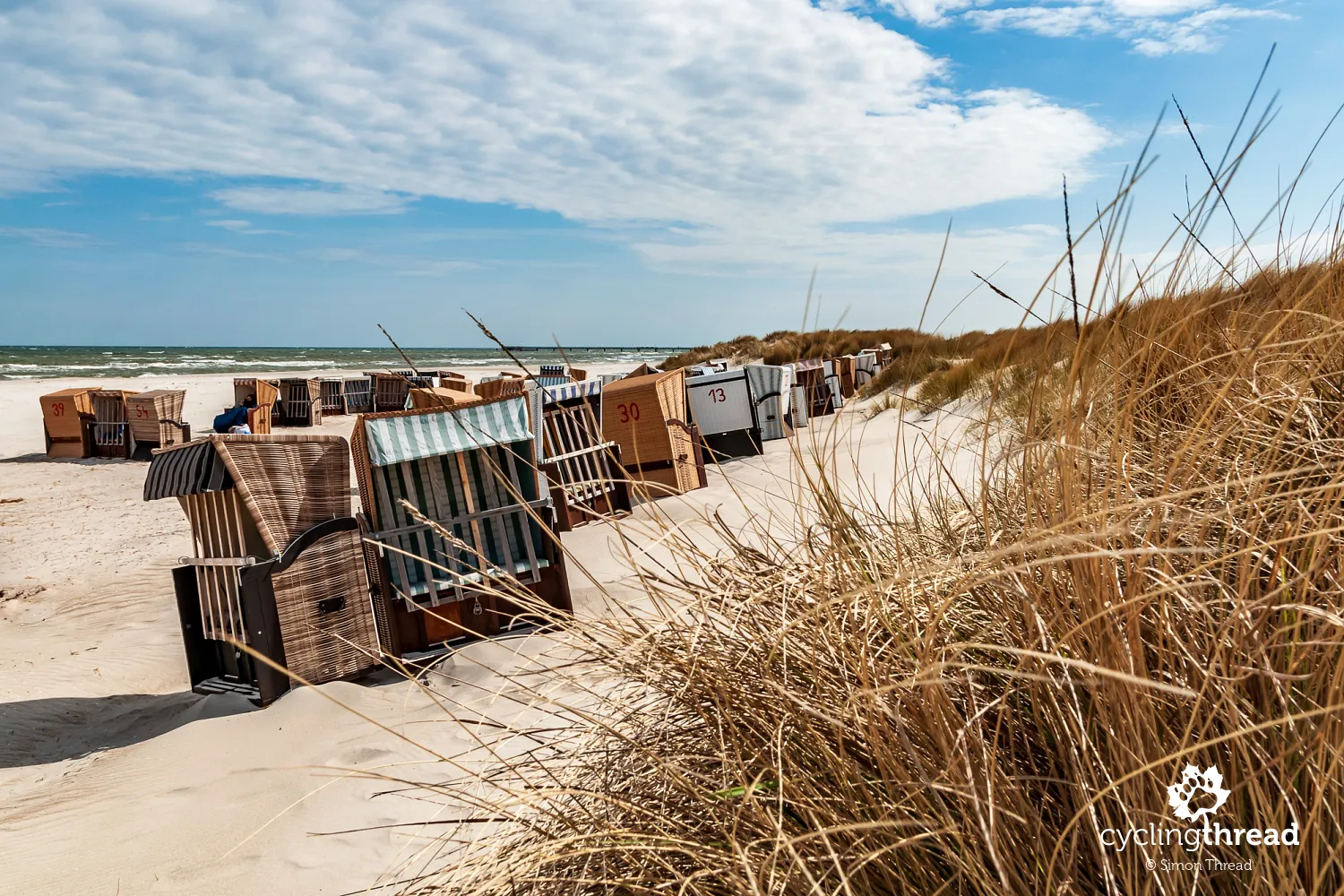
EuroVelo 10 - the Baltic Sea Coast route
Before heading to the German section of EuroVelo 10, we already had some experience with the Polish part of the Baltic Sea Coast Cycle Route. On one hand, we had plenty of great memories from many unique stretches of the Polish route. On the other, we also remembered a few sections that were hard to ride. It was exactly this curiosity — the desire to compare both routes — that drew us to the German Baltic coast. We also expected a similar natural setting on both sides, as well as shared historical processes that have shaped these coastal regions. And there was something else we wanted to find out: how the infrastructure and signage differ between the two countries, and what practical ideas might be worth bringing back home.
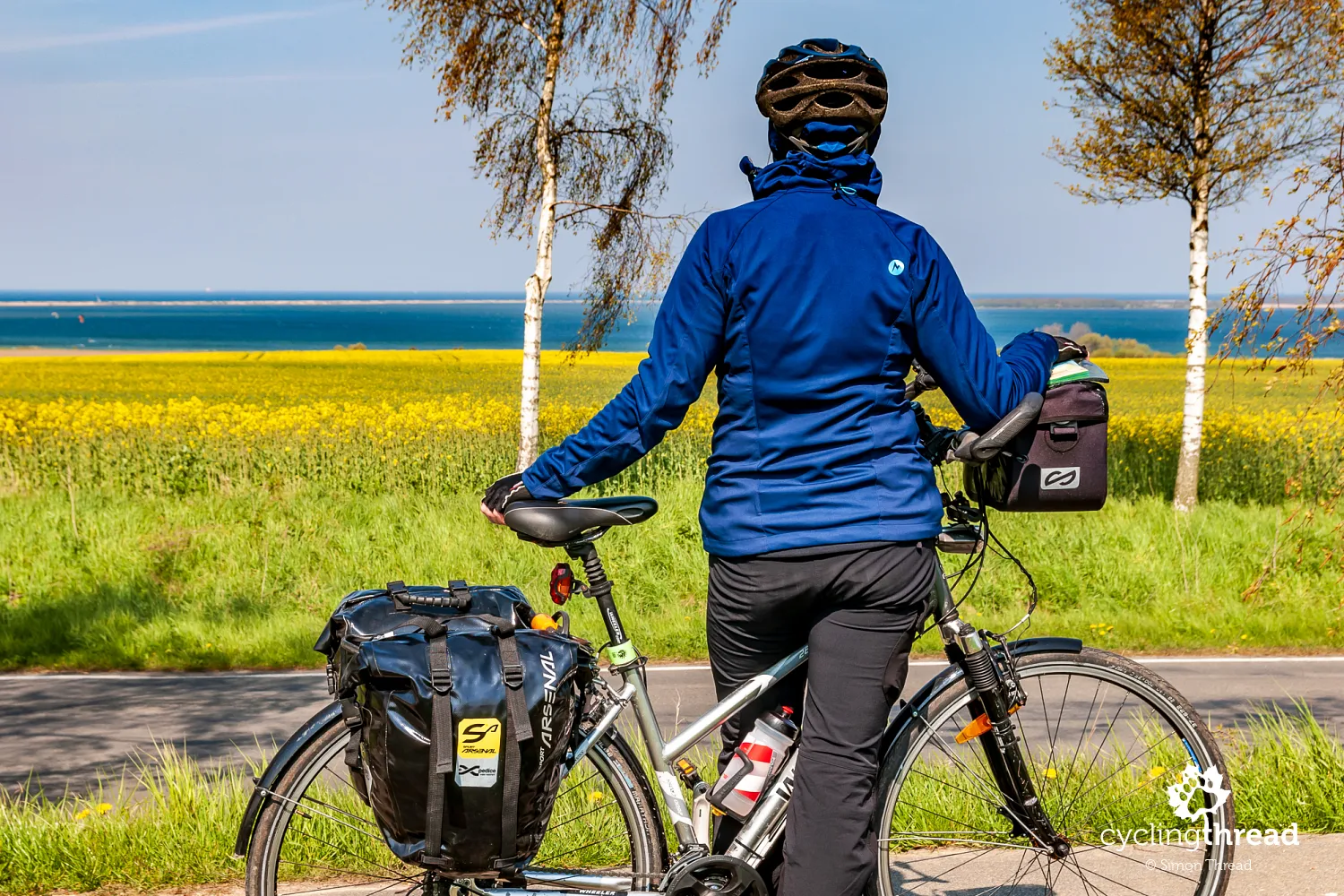
Our route followed the Ostseeküsten-Radweg — literally, the Baltic Sea Coast Cycle Route. In Germany, the Baltic is often referred to as the "Eastern Sea", hence the German name of the route. This route, which overlaps with the EuroVelo itinerary encircling the Baltic Sea, is one of the most popular cycling destinations in the country. It consistently ranks at the top of the annual survey by the German Cyclists' Association (ADFC) — both among routes people have already ridden and those they dream of doing next. And honestly, we weren’t surprised. Throughout our journey, we regularly met long-distance cyclists of all ages. The landscapes are beautiful, the surfaces are excellent — not always paved, but always solid and well maintained. Signage is clear and consistent. There are plenty of rest stops and, most importantly, lots of interesting places to explore. Cycling in Germany is always a pleasure.

Lübeck - that's the Hanseatic League!
We arrived in Lübeck the way we always travel to Germany - by train with bicycles. This time, we took the route via Berlin, where the Berlin Wall Cycle Route is well worth exploring. Stepping out of the station in Lübeck, we instantly felt at home - the city reminded us so much of Gdańsk (also located along EuroVelo 10). The Gothic charm of Lübeck, with its red-brick architecture, the island-like Old Town surrounded by rivers, and the imposing Holstentor gate welcoming visitors into the historic center, created a strikingly familiar atmosphere. The city’s rich Hanseatic heritage still lingers in its narrow streets, gabled warehouses, and old merchant houses. Whether we were heading to our hotel, wandering through the city, or eventually cycling out of it, we stayed on smooth and well-marked bike paths the entire time.
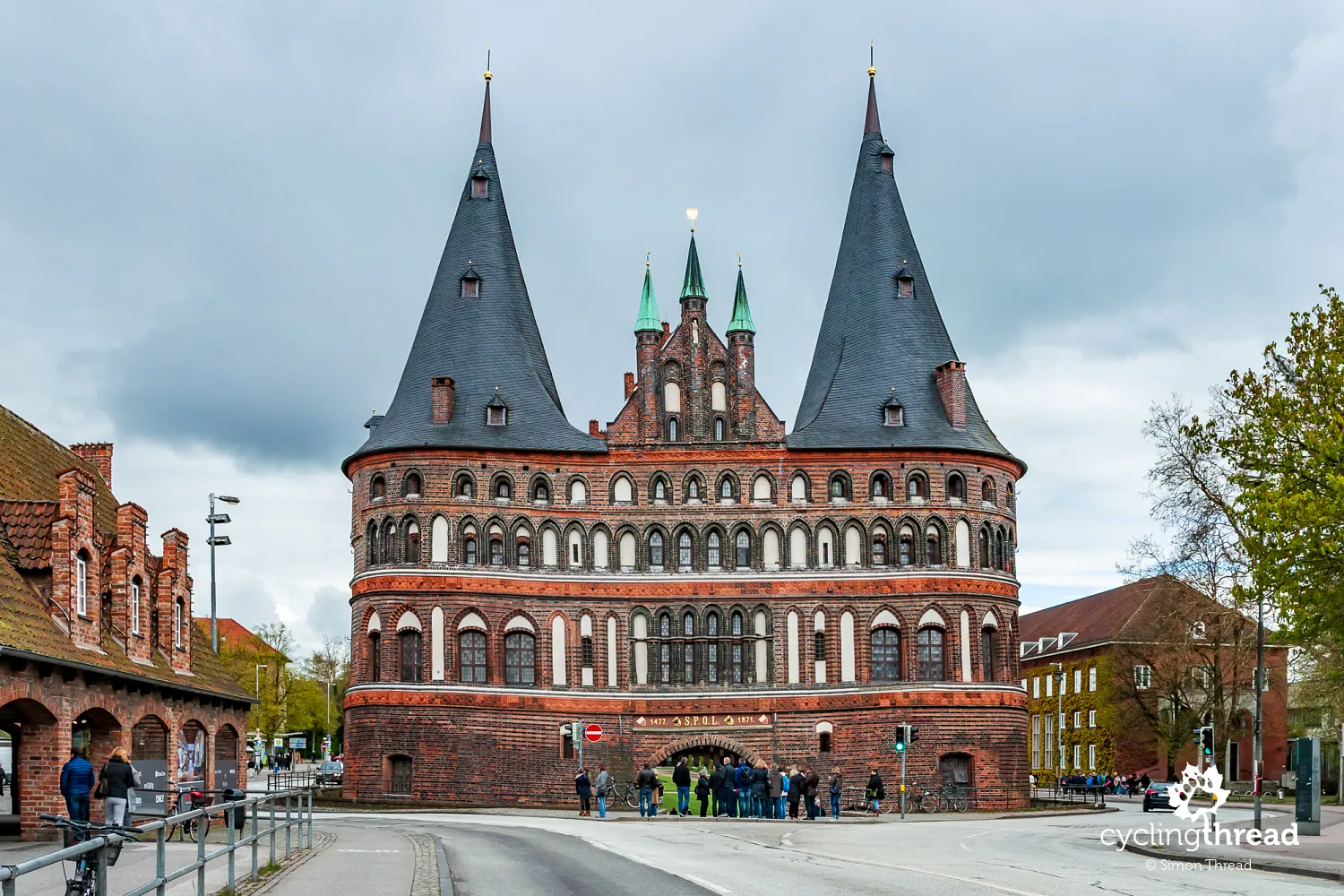
The nomination for European Museum of the Year
The Hanseatic League played a huge role in Lübeck’s medieval past. It was the largest trading confederation of cities at the time, and Lübeck stood at its very heart - often referred to as the "Queen of the Hanse". The European Hansemuseum, located at the northern edge of the Old Town island, is dedicated to this legacy. It’s been nominated for this year’s European Museum of the Year Award (EMYA). We were instantly captivated upon entering. In a dimly lit, immersive setting evoking the medieval Baltic, we learned from an interactive display that the origins of the Hanseatic League go back to a 1229 agreement between Lübeck, Hamburg, Visby and the city of Novgorod. The goal? To ensure safe trade routes.
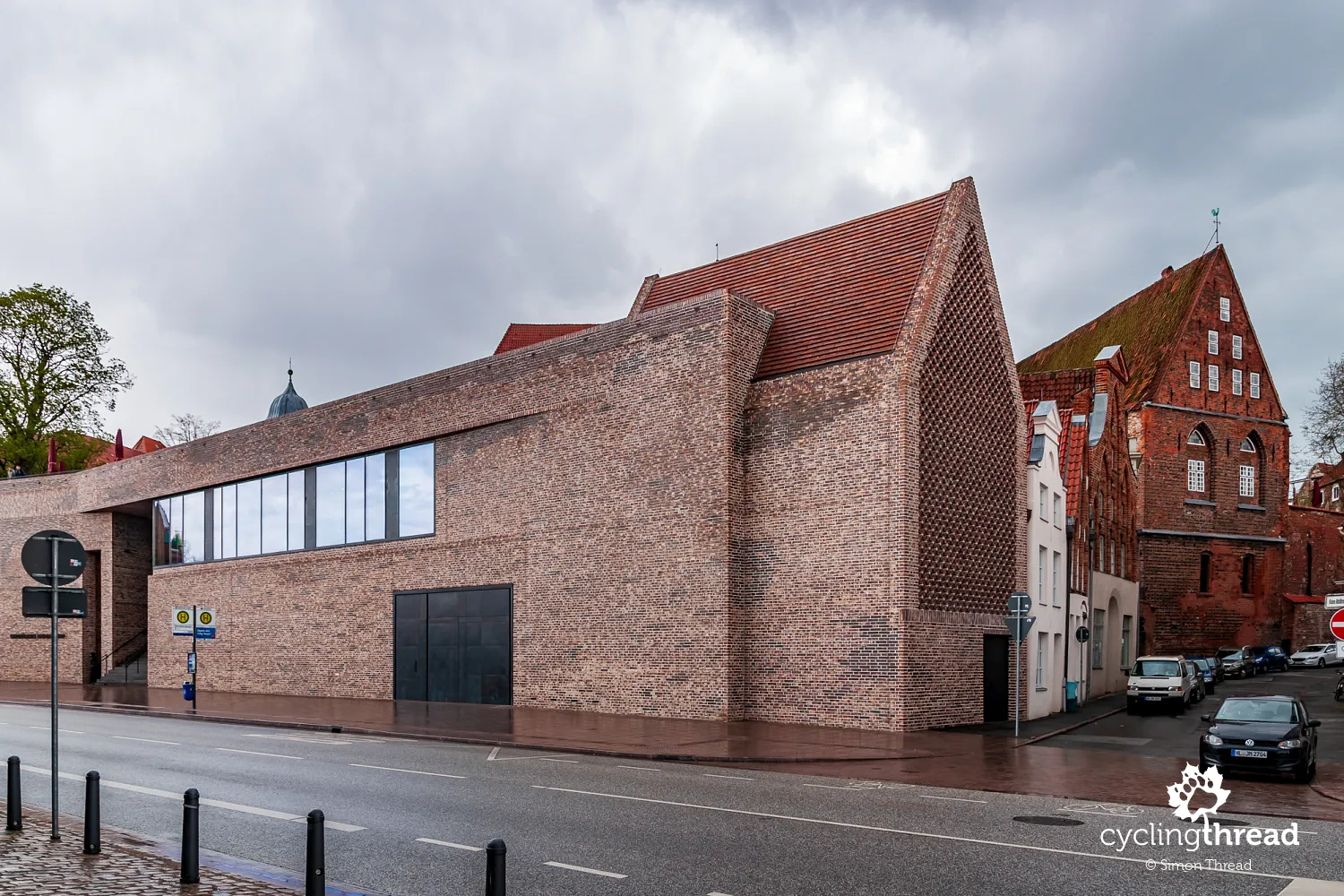
Inside the museum, you’ll find traces of the original medieval structures that the modern building was built upon. You’ll walk through narrow alleys of old Baltic cities where fish, hides and textiles were traded. One room recreates the atmosphere of the Hanseatic parliament - the Hansetag. Another space, near the end of the exhibition, presents a long table with just six chairs symbolically pulled out - representing the League’s final parliamentary session, in which Gdańsk also took part. Gdańsk, in fact, played a major role throughout Hanseatic history. One section of the museum even recreates medieval Bergen, instantly bringing back memories of our trip to Norway. When entering the museum, take the staff’s advice and check out the touchscreen monitors - they let you choose a Hanseatic city and dive deeper into its story through multimedia elements. And take your time - this is not a one-hour museum!
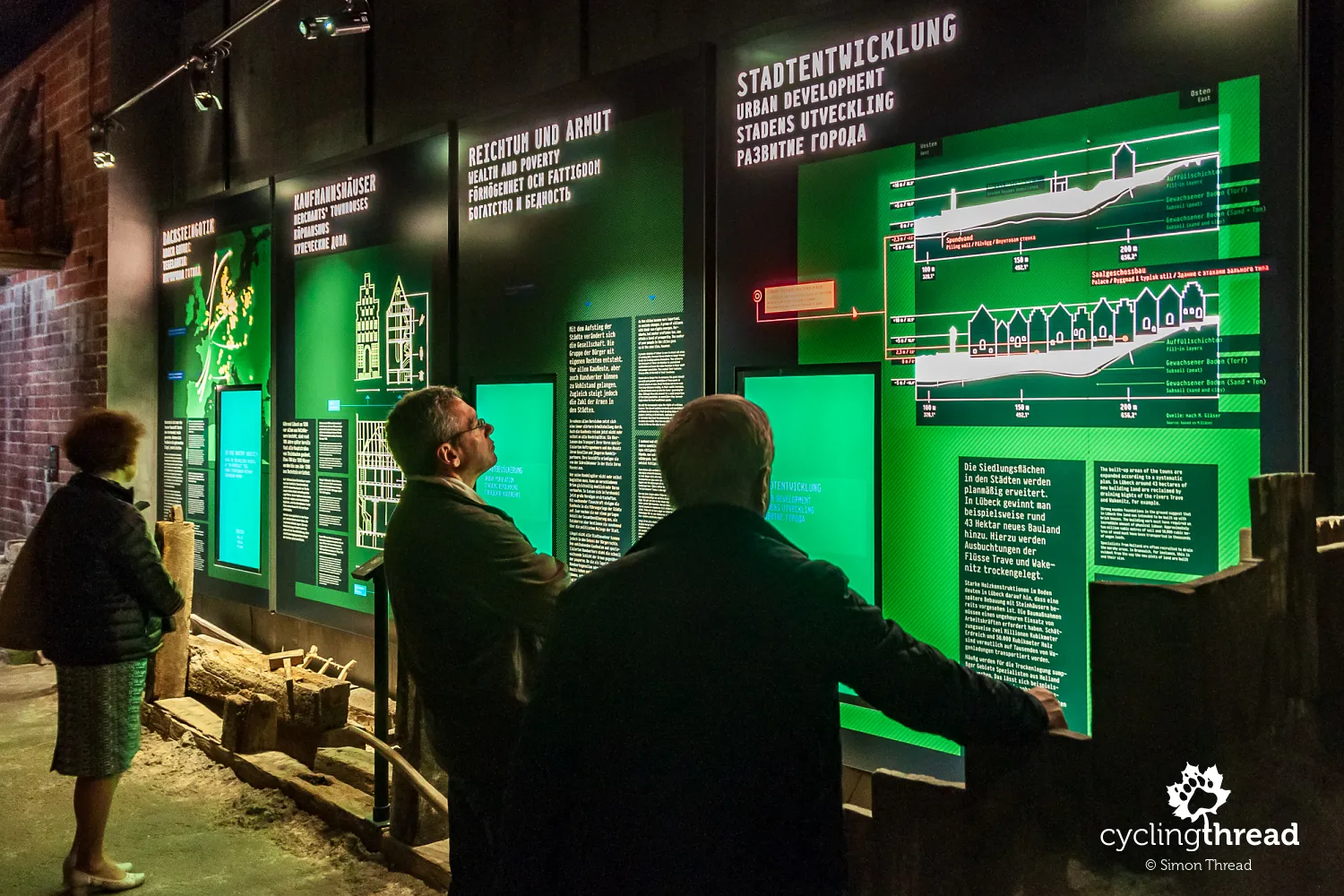
Backsteingotik - brick Gothic in northern Germany
The golden age of the Hanseatic League also left its mark on the architecture of the region, giving rise to the iconic Backsteingotik - brick Gothic - which northern Germany is proud to showcase. It was thanks to wealthy merchants that massive and impressive churches were built, like St. Mary’s Church towering over Lübeck’s Old Town. Today, it’s seen as a model for Gothic religious architecture in the region. Other churches tried to match its grandeur, like the Church of St. Nicholas in Wismar or the beautifully decorated St. Nicholas Church in Stralsund. But it wasn’t just churches - there were also grand secular buildings, both private and public. Lübeck and Stralsund boast stunning town halls, Lübeck has its austere salt warehouses, Stralsund its grain granaries, not to mention the distinctive city gates and hundreds of charming townhouses. It’s impossible to describe in detail all the beauty of German Gothic in just one article - it was our constant companion along the Baltic coast.

Impressive interiors of Gothic churches
The eye-catching exteriors of these German churches are often matched by truly unique interiors. Visitors are drawn not only to restored original features - like the vibrantly colorful St. Nicholas Church in Stralsund - but also to modern additions. In Wismar, St. Nicholas Church now doubles as a gallery for sacred objects saved from wartime destruction in other regional churches. In the tiny Gothic Seafarers' Church in Prerow, there's even a contemporary art gallery tucked beneath the choir. And in Lübeck’s St. Mary’s Church, you'll find an exhibition about its wartime destruction and reconstruction, as well as the shattered bells that fell from the tower during an Allied bombing in 1942. They still lie in pieces today, a haunting reminder of the tragedy. Their replacements came from... Gdańsk. Out of 36 bells in the church’s carillon and seven main bells, 28 and three respectively were taken from Gdańsk by order of Hermann Göring. Today, they could have been ringing in St. Catherine’s, St. John’s, or St. Mary’s Basilica - churches beloved by Gdańsk locals. It’s a difficult piece of history to swallow - one that can still catch in your throat.
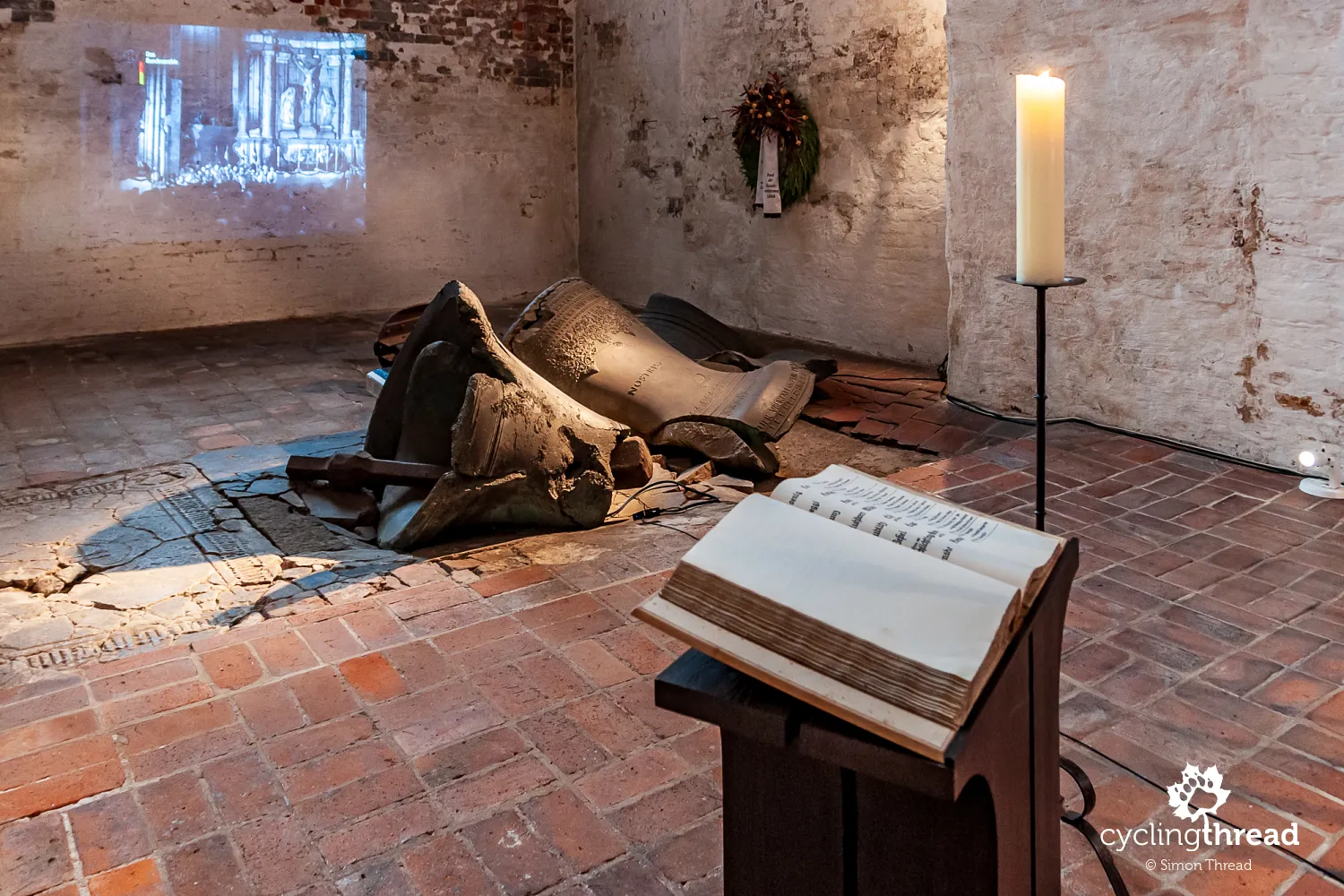
In Europe's marzipan capital
Thankfully, just around the corner on one of Lübeck’s two main Old Town streets, you can sweeten those bitter memories. Right across from the beautiful town hall (do step inside!) is one of Lübeck’s most iconic spots - the headquarters of Niederegger, a company that’s been making marzipan treats for over 200 years. Back in the day, marzipan was even more popular than chocolate. Learning about the company’s beginnings brings up thoughts of the unique flavor that made Johann Georg Niederegger’s sweets such a lasting success. In the café and shop on the ground floor, you can buy the famous marzipan loaves, chocolate-covered treats, and gift boxes - but also enjoy delicious cakes and exquisite pralines filled not just with marzipan, but also nougat and truffles. Don’t expect to breeze through, though - you’ll probably be sharing the space with a crowd of other sweet-toothed visitors.
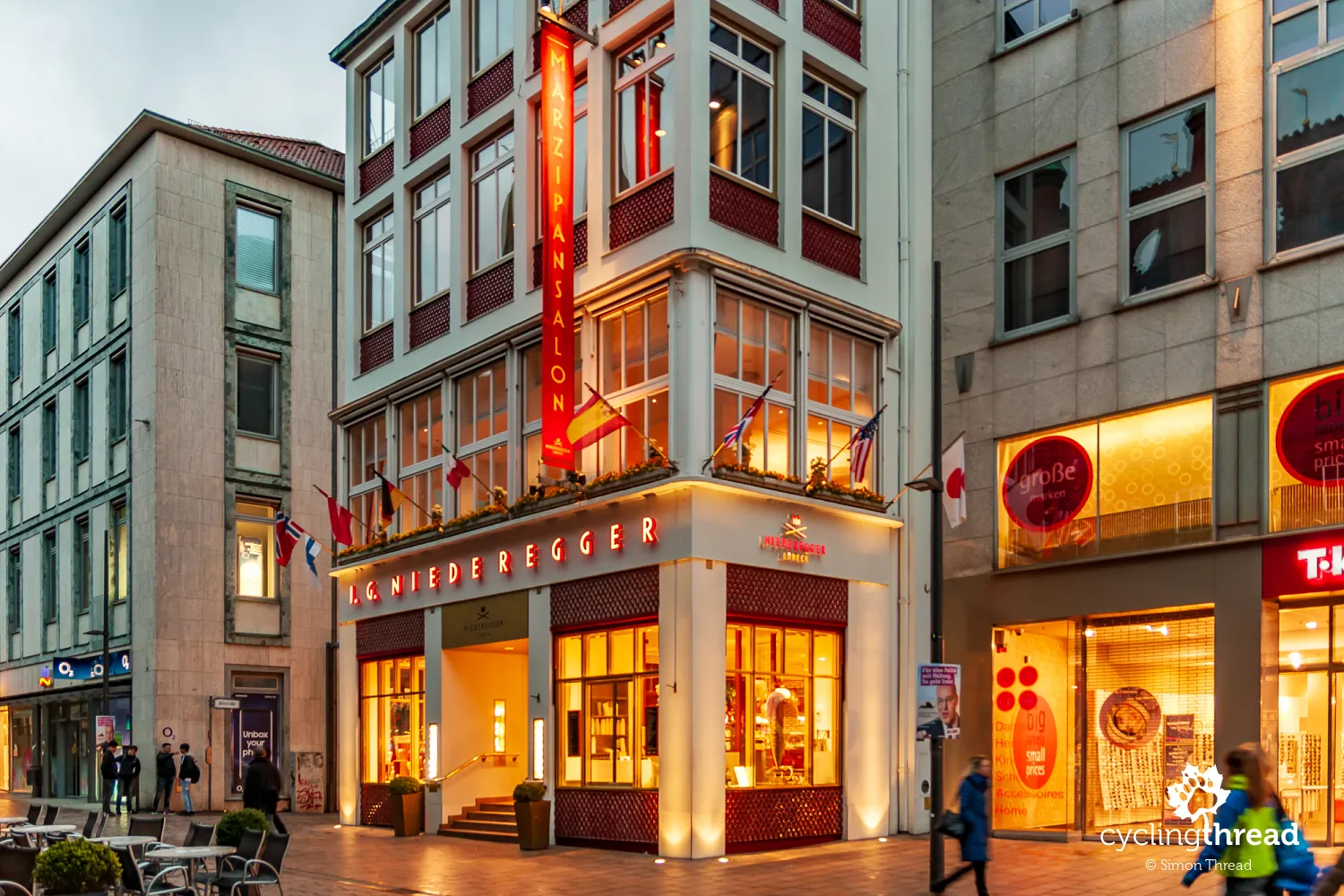
Lübeck, the city of three Nobel laureates
After stocking up on marzipan for the road, we visited another well-known place - the Günter Grass Museum. Grass was one of three Nobel Prize winners associated with Lübeck. Known for his sharp political voice and complex literary style, he was not only a writer but also a sculptor and graphic artist - and the museum reflects all those facets of his work. The other two Nobel laureates connected to Lübeck are the celebrated writer Thomas Mann and former chancellor Willy Brandt, who received the Nobel Peace Prize in 1971. Mann, born in Lübeck in 1875, drew heavily on his hometown in his famous novel Buddenbrooks, which earned him the Nobel Prize in Literature in 1929. Today, his legacy lives on at the Buddenbrookhaus, a museum dedicated to the Mann family. Brandt spent part of his youth in Lübeck before rising to political prominence as a symbol of democratic values and reconciliation in postwar Europe.
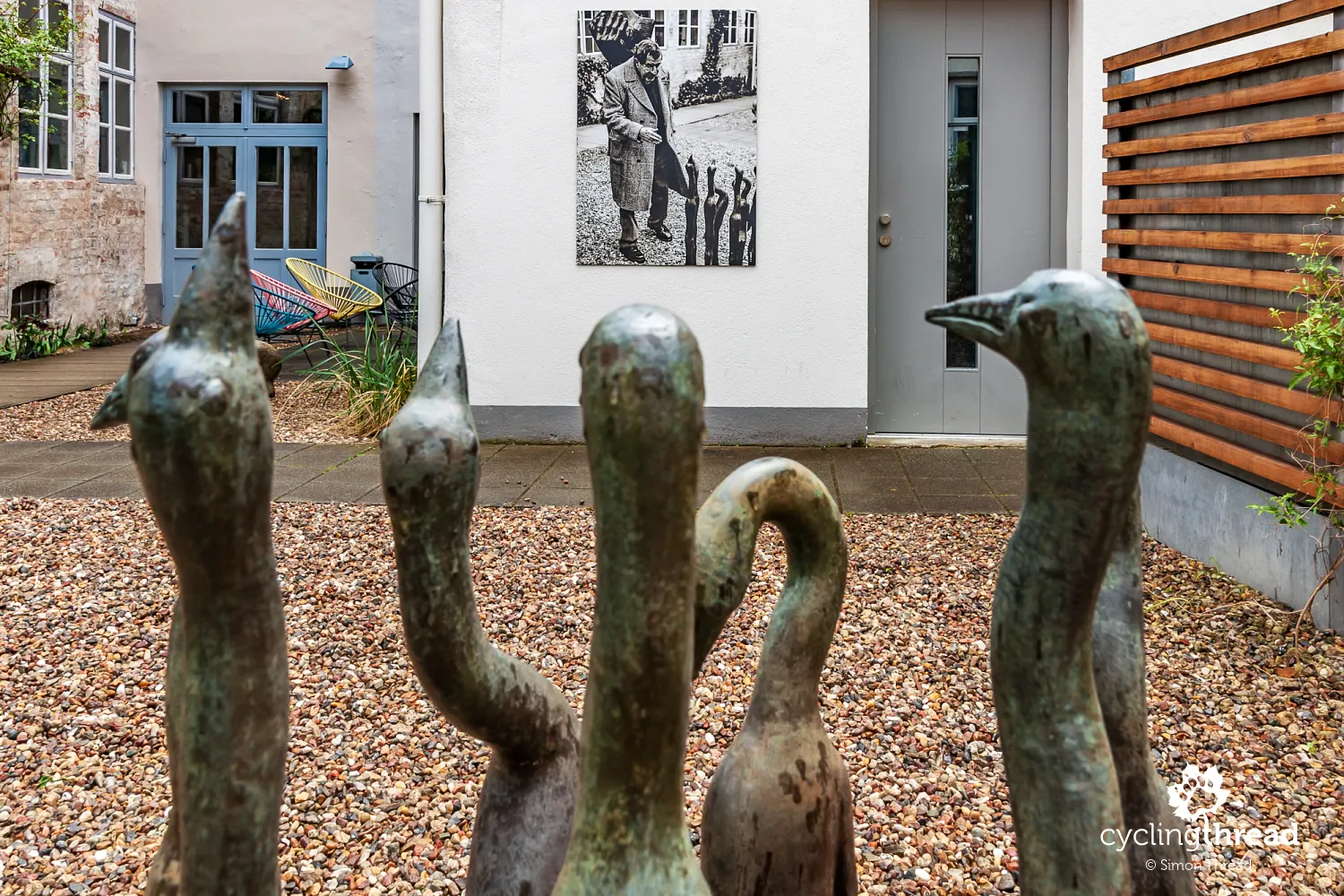
A unique farewell to Lübeck
As we were leaving the city and crossing the Erik Warburg Bridge over the Trave River, a warning bell rang behind us, red lights flashed and suddenly a massive wall of asphalt began to rise before our eyes. It was a drawbridge, making way for a cruise ship bound for Travemünde. We stood there, amazed by the sheer scale of the structure, named after a Jewish businessman from Hamburg. Once the ship had passed, we pedaled off in its wake along the historic Old Salt Road bike route, heading toward the Baltic coast and the seaside district of Travemünde.

A sunny welcome from the Baltic Sea
In Travemünde, we finally met the Baltic Sea. We paused by the promenade, watching sunbathers and holidaymakers enjoying the golden hour. For a moment, we envied those who could simply stay and watch the sun dip into the water - while we still had several kilometers to go before reaching our hotel. As we waited for the small ferry to take us across the Trave River, massive ships passed before our eyes, slowly making their way to or from the port. The contrast between our quiet bikes and those giants of the sea made the moment feel even more surreal.
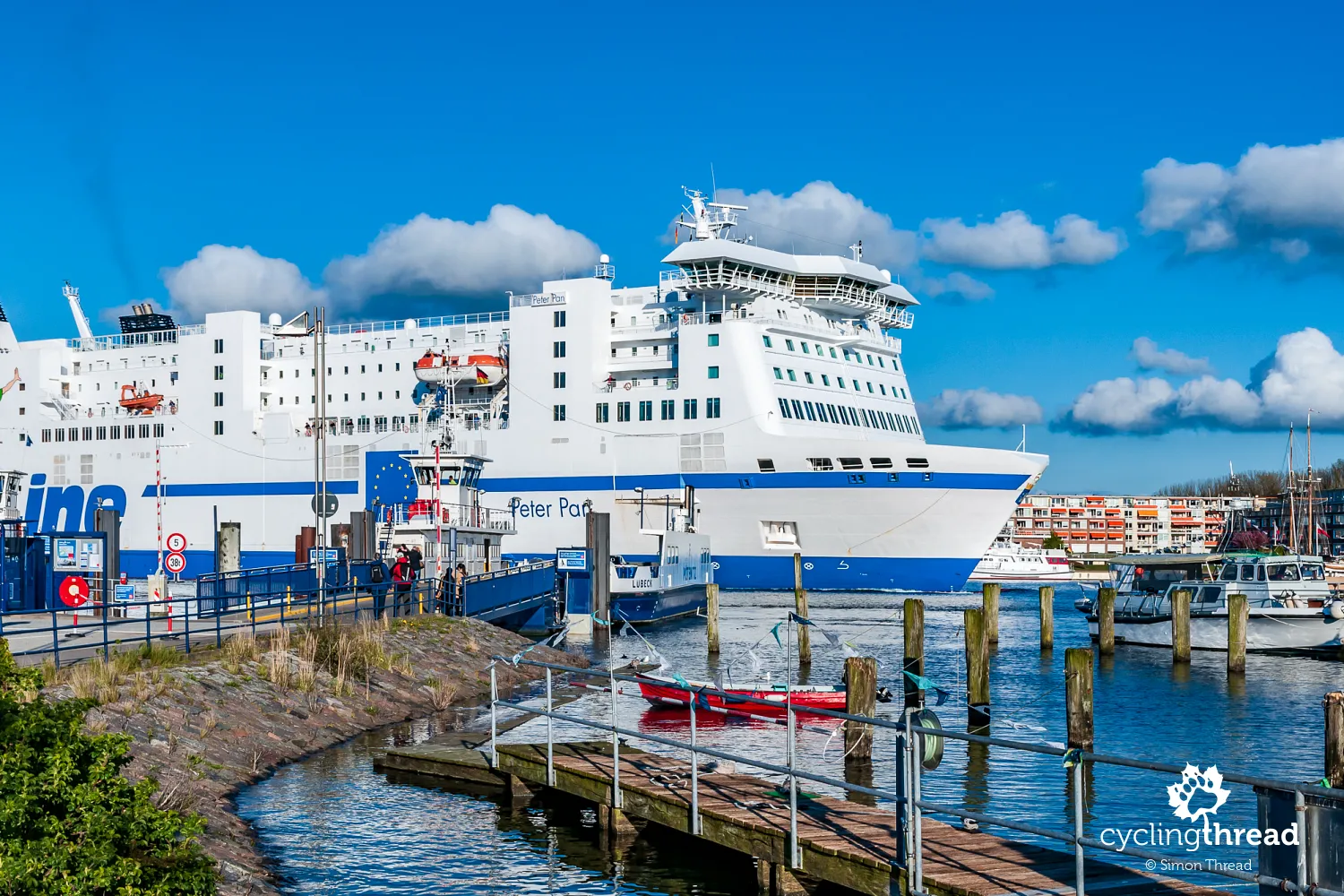
The cycling route crosses the Iron Curtain
Between Travemünde and Boltenhagen, the Ostseeküsten-Radweg crosses what was once the border between the German Democratic Republic and the Federal Republic of Germany. To get a sense of how it used to look, take a peek through the tall "viewfinder" installed along the route. There were once barbed wire fences here, a strip of no-man’s land separating the two countries, and constant patrols by border guards. Today, tourists from all over Europe ride the route circling the Baltic Sea. Interestingly, the beach in Boltenhagen - where part of the barrier once ran - was open to the public by day but closed off entirely at night.
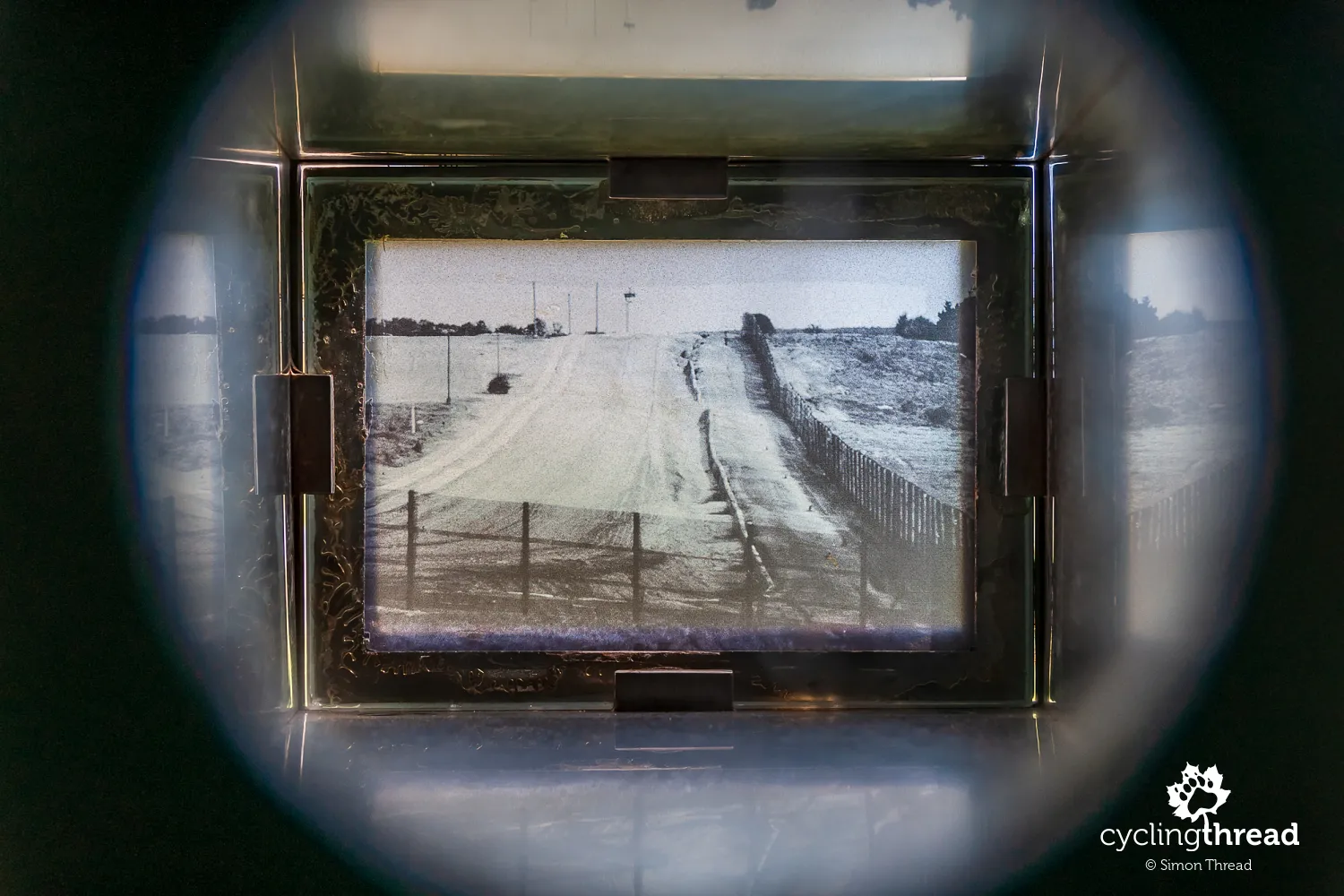
A perfect seaside vibe along the way
One of the first towns we reached the next day was Boltenhagen. This cheerful, colorful seaside resort was basking in a fantastic Baltic mood. Neat villas peeked out from behind rows of old trees, cafés spilled out onto the streets, and a breeze from the sea carried the sound of gulls and laughter. We took a short break on the pier, watching families stroll and cyclists roll by - everyone seemed to be in holiday mode. It was the kind of place where time slows down, just enough for you to take it all in.

Wismar - a Hanseatic gem on the UNESCO list
Wismar, the second Hanseatic town we visited along the German Baltic coast, once again reminded us of the unique way Germany confronts the horrors of World War II. Here, the bombed St. Mary's Church was never rebuilt. Instead, a low outline of its former walls, about a meter or so high, was preserved, overshadowed by the surviving massive tower. So instead of a beautiful Gothic church like in many other northern German towns, visitors here see only what remains - but this unusual choice left a strong impression on us. It immediately brought to mind the ruined St. Giles Church in Hanover, which serves a similar purpose, and the shattered bells we had seen just the day before in Lübeck's St. Mary's Church.
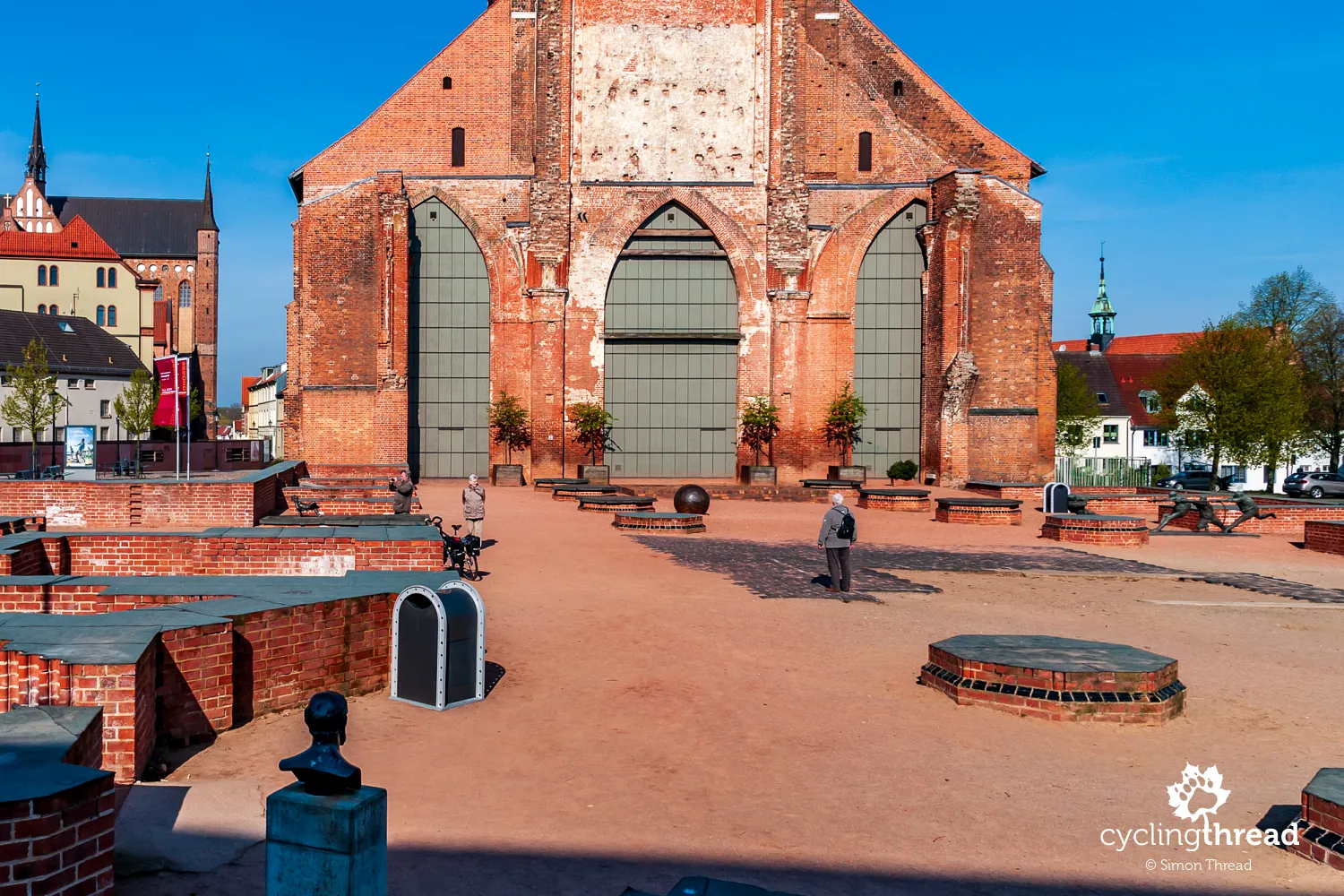
Thanks to the location of our Bett+Bike hotel, we spent most of our time in Wismar around the Old Port. After dinner at a fantastic little Italian place right on the waterfront - run by a family from Sicily - we were mesmerized by the sunset lighting up the city skyline, rising above the harbor district. In the golden evening glow, the solitary tower of the memorial church of St. Mary stood out. Below, we spotted the distinctive Water Gate and the iconic Vault (Gewölbe) perched above the Grube Canal, the oldest man-made canal in Germany, best known from its postcard-perfect view from the opposite side. We also began the next day here on the waterfront - with our breakfast served straight from one of the moored fishing boats.
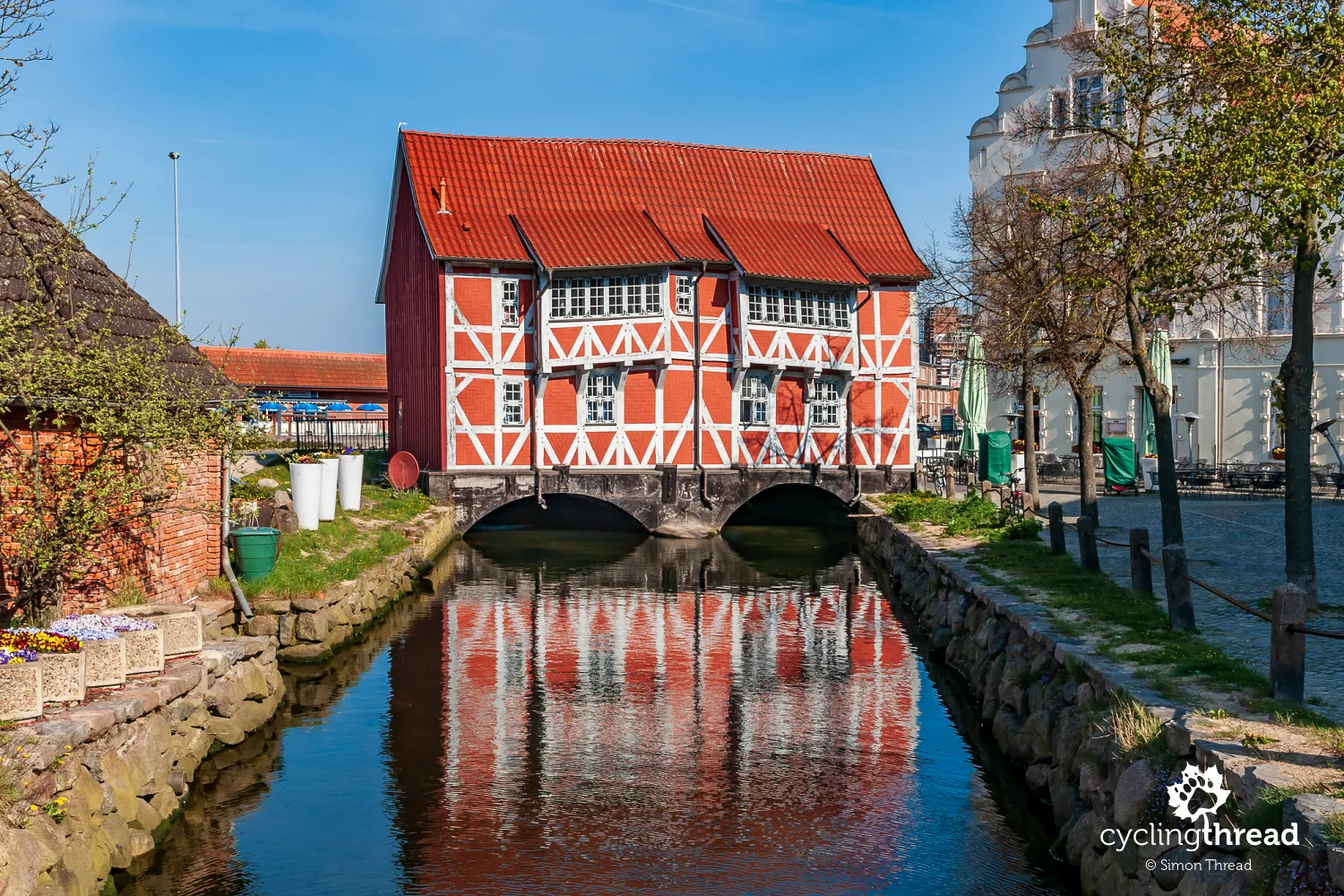
Fish in a bun, fresh off the boat
As you travel the Baltic coast route in Germany, you'll find seafood at nearly every turn. The star of the show? Fischbrötchen - classic German fish sandwiches. And the most beloved variety features matjes, young herring that hasn’t yet reached maturity. Eaten by the water, at a little table next to a gently rocking fishing boat, this simple snack becomes something of a cycling travel ritual. It reminded us of those laid-back coastal vibes from our bike trip on Bornholm a few years back. Prices vary - a matjes sandwich typically costs around €2.50, while those made with prized fish from the North Sea or the Atlantic can go for about €5. What’s especially charming is the generosity - sometimes there’s more fish than bun!
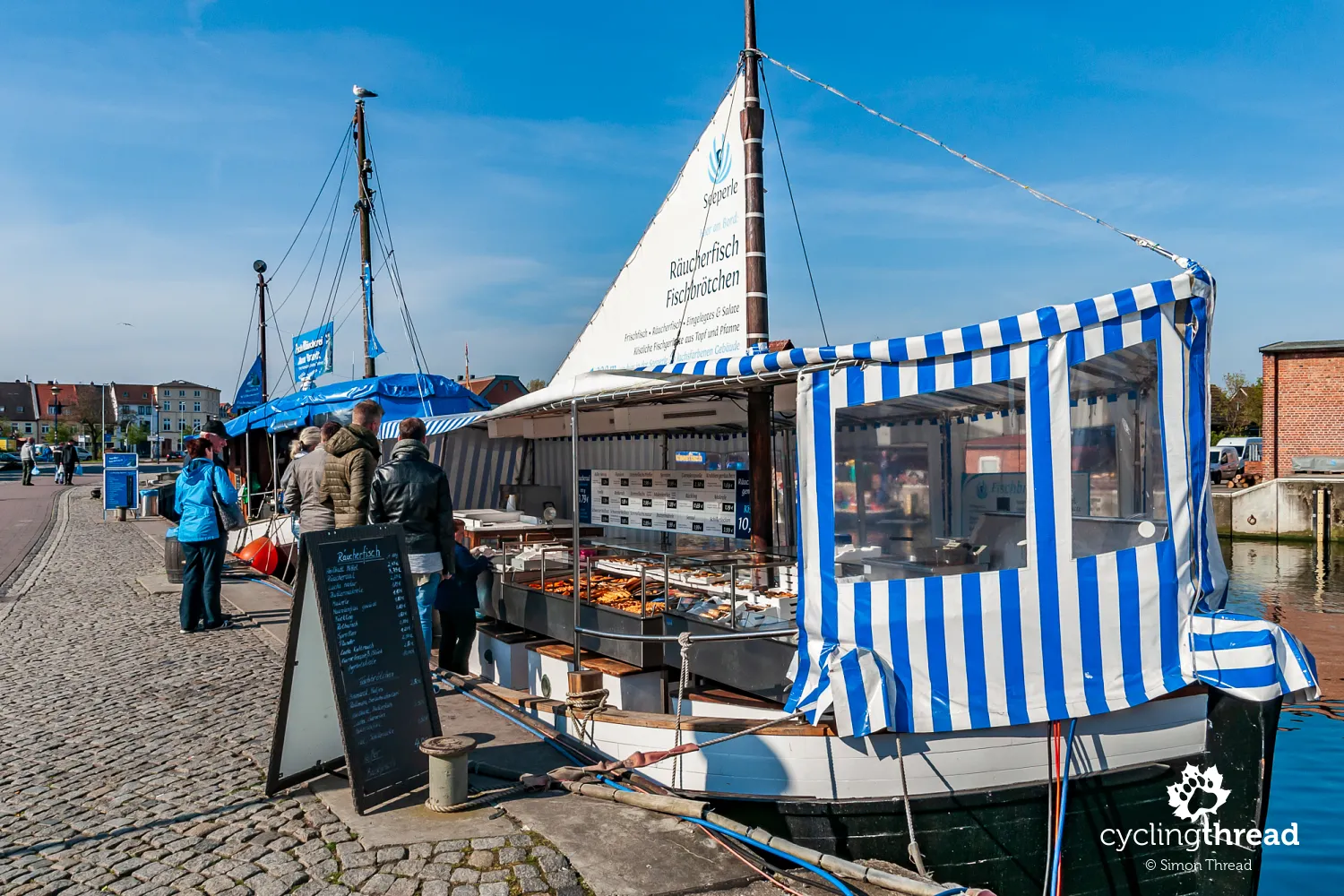
Bike-friendly stays with Bett+Bike
Accommodation along cycling routes is one of the real joys of bike touring in Germany. The Bett+Bike network offers places specifically tailored to bike travelers - and cyclists truly make use of it. We even met a few fellow bikers while staying at different locations along the way. Safe bike storage, access to tools or basic spare parts - small details that make a big difference, and might even save your trip. What’s also great is the range in comfort and price - from campsites and guesthouses to luxury hotels, you’ll find something to fit your budget. And wherever you go, cyclists are genuinely welcome. In Germany, cycling hasn’t been seen as a low-budget travel style for quite some time. You’ll find availability and seasonal deals on Booking.com.
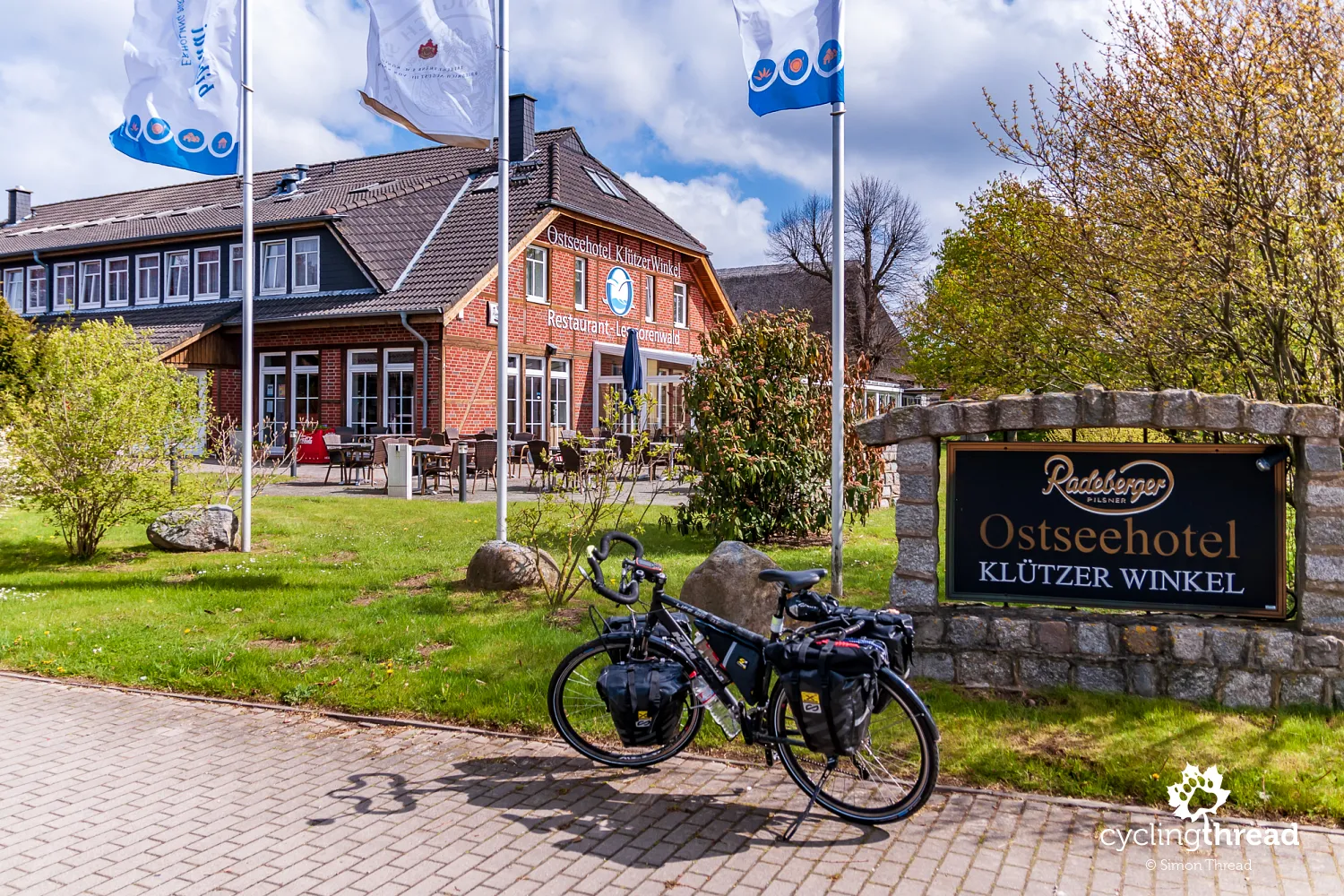
One of the most unique places we stayed was on the Darss Peninsula, where we arrived absolutely exhausted after a day of battling headwinds. We spent the night at a hotel housed in a converted train station, fittingly called the Old Station. A locomotive still stands out front, a nod to the building’s railway past, and the restaurant inside feels like a dining car from a bygone era. The entire peninsula is full of character. Most of its remarkable landscape lies within the Vorpommersche Boddenlandschaft National Park - a haven for cranes and wild geese. Every spring, herring swim into the shallow lagoons around the peninsula to spawn.
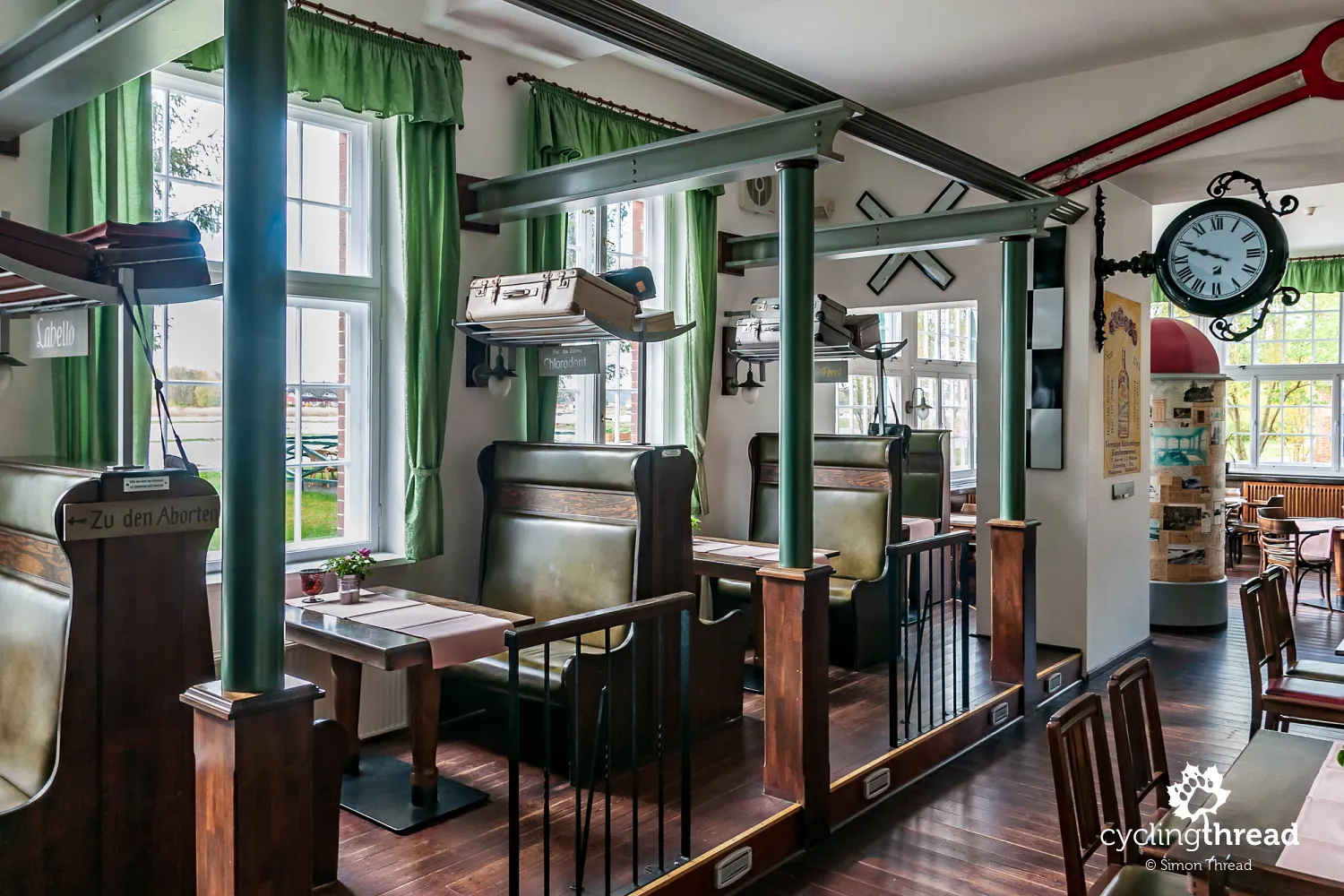
In Rostock, the real charm is in Warnemünde
The next big city on our Baltic tour was Rostock, once the most powerful city in the Hanseatic League. It was heavily damaged during WWII, then rebuilt by East Germany, becoming the GDR’s most important port. After reunification, it lost its strategic status and about 20% of the population moved away. Most of the city was rebuilt in a modern style, and for us, Rostock simply couldn’t match the charm of Lübeck or Wismar. What we’ll remember most from our visit was the seaside district of Warnemünde and the boat ride there from the city center. Bikes were no issue on board - smooth, scenic sailing - and once we reached Warnemünde, the atmosphere around the Warnow River and harbor canal was simply delightful. Of course, we celebrated with another fish sandwich by the water. We pedaled along the quayside, took in the historic lighthouse, were a bit surprised by an out-of-place hotel skyscraper, and finally reached the next beach of our trip.
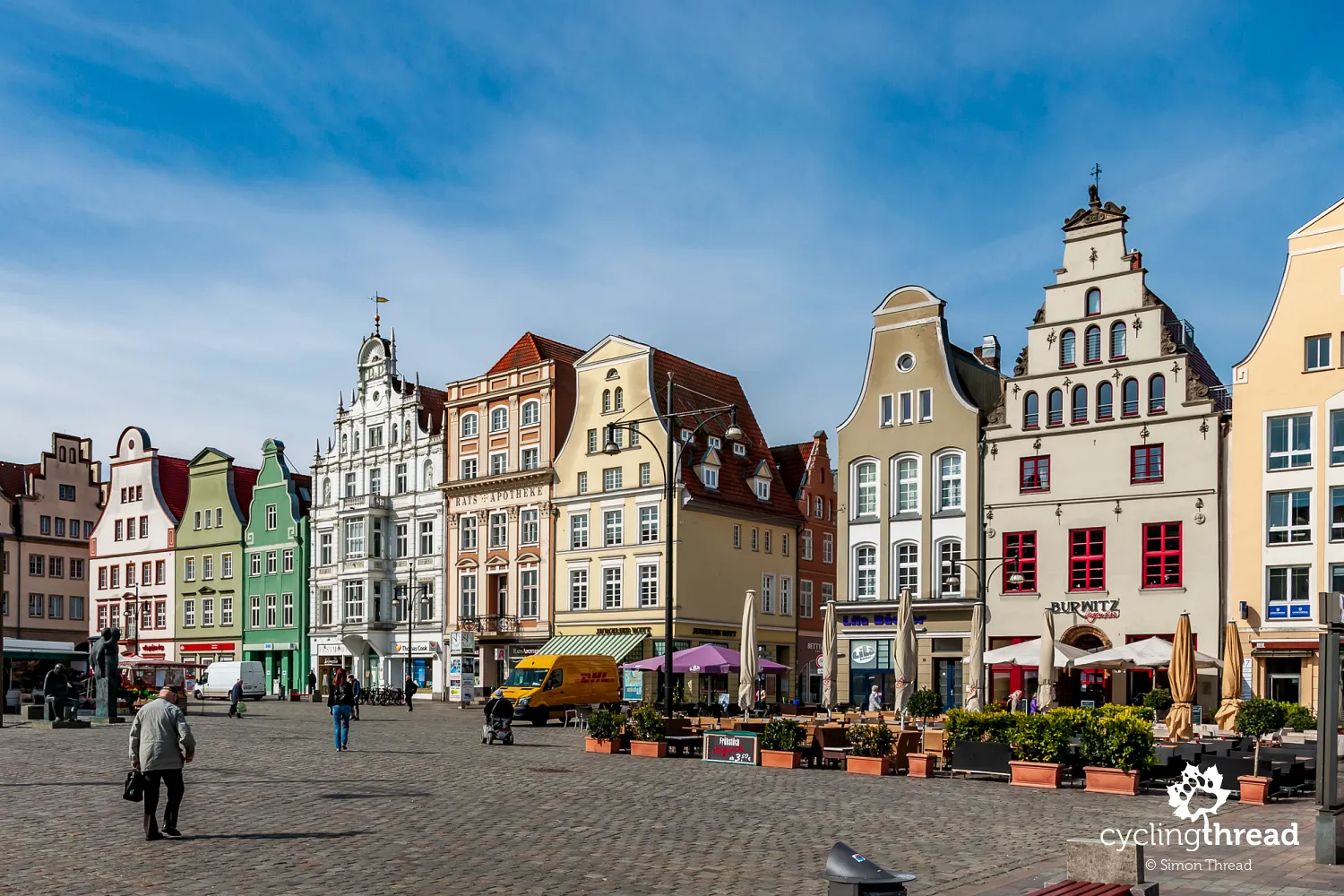
The homeland of wicker beach chairs
Blue-and-white fabric, a wicker chair and a seaside beach - this image has always made me think of northern Germany. Maybe it’s clever German marketing, maybe just a subconscious connection, but I was still surprised to learn - while writing up our journey along the German Baltic coast - that the world’s very first beach chair was actually invented here. In 1882, a basketmaker from Rostock built one at the request of a local aristocrat. The goal was simple: to provide a sheltered, comfortable place to enjoy the sea air without being exposed to the wind. Today, the Strandkorb is an icon of German beach culture, lining the shores from the North Sea to the Baltic in perfect, orderly rows.
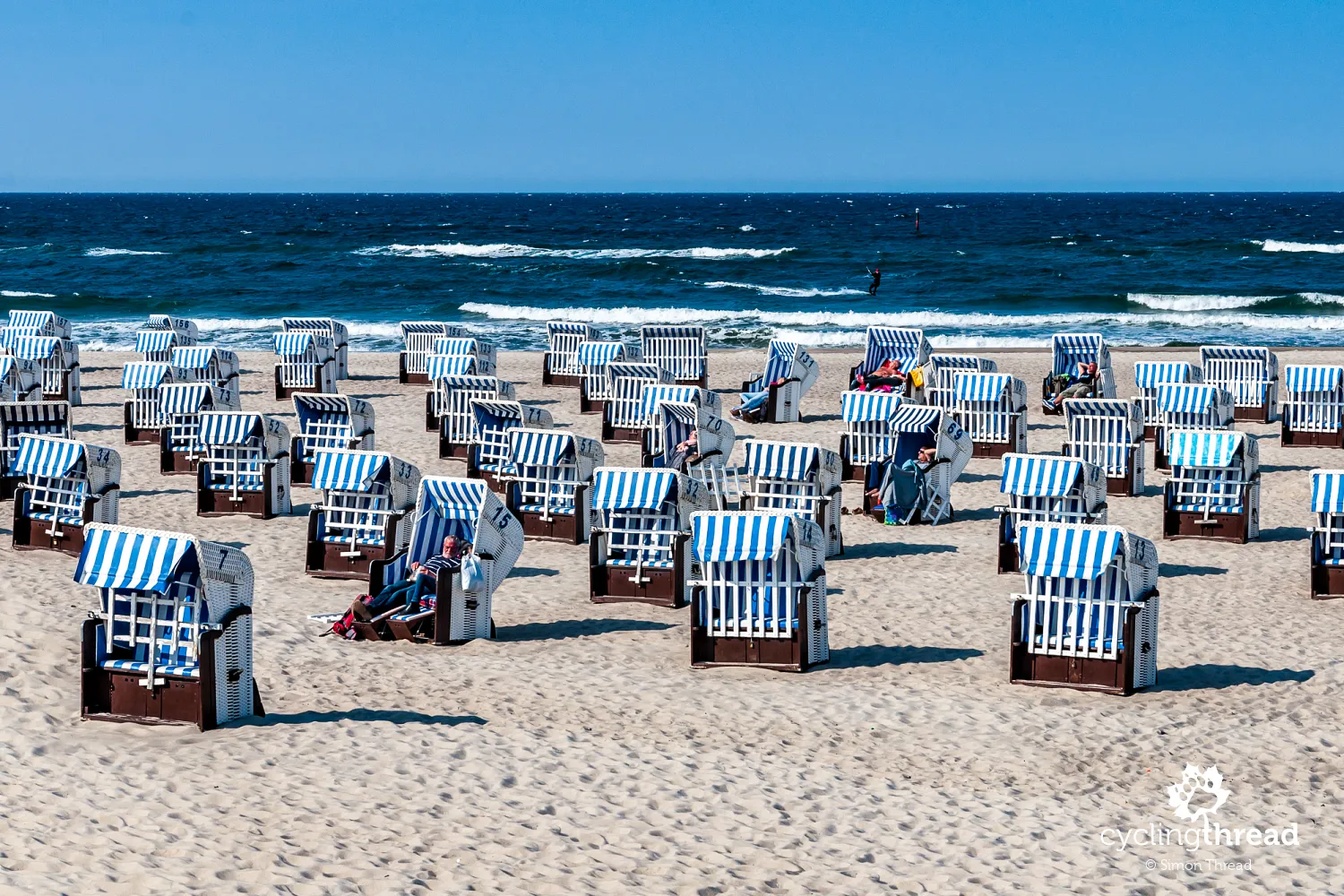
Beautiful Stralsund to wrap things up
We celebrated reaching our final destination with a delicious seafood dinner in the Old Town of Stralsund. It was well deserved - riding into the wind for so many kilometers had completely worn us out. The next morning, we saved time for a visit to the Ozeaneum - a massive aquarium and natural history museum focused on the Baltic Sea and the world’s oceans. Among all the interactive exhibits and impressive tanks, the thing that struck me most was a "simple" model of a blue whale. Suspended in a vast, dimly lit room that mimicked the ocean depths and filled with underwater sounds, it was easy to let your imagination wander. In just a moment, I was deep in a marine trench - and it was pure magic.
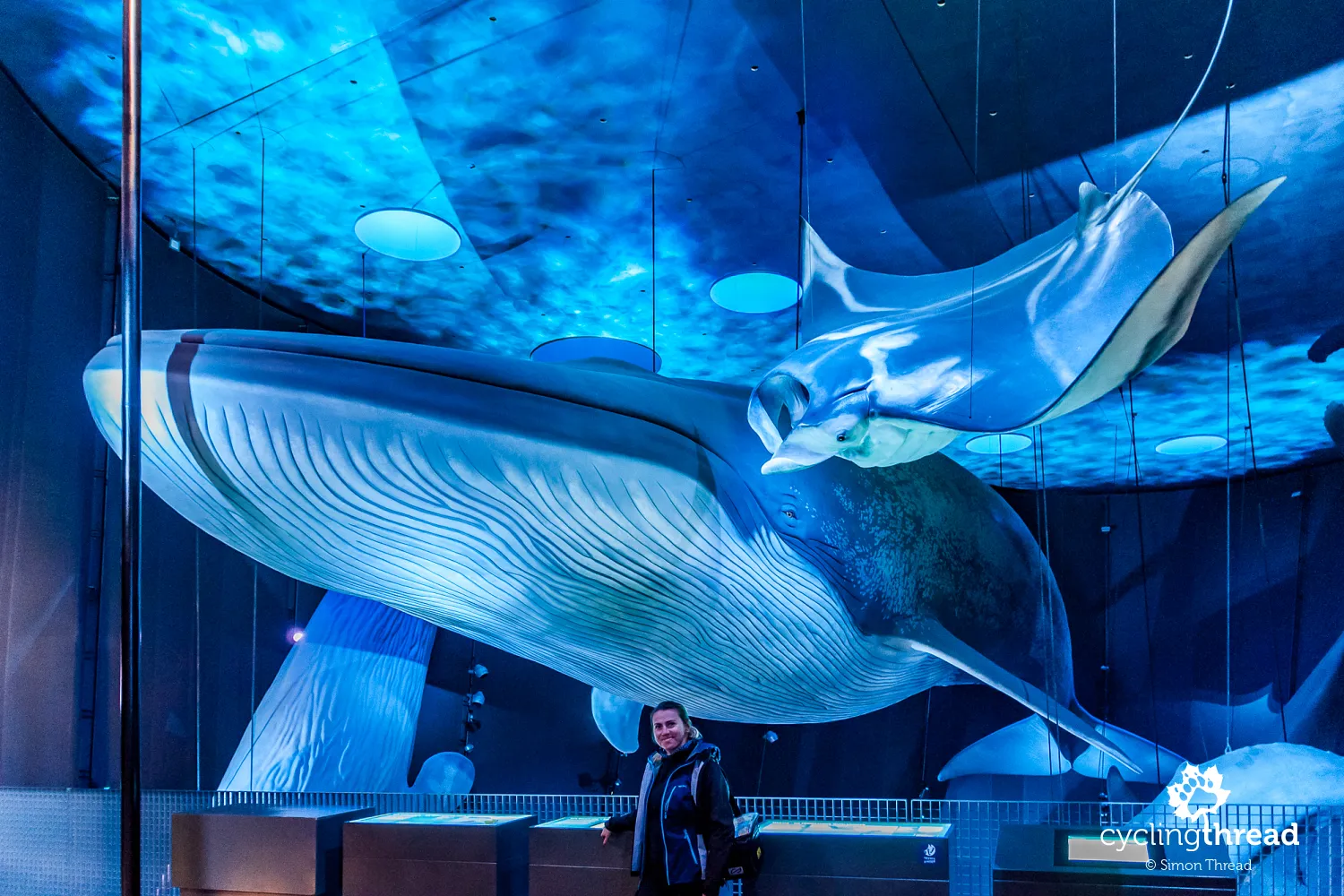
The last beautiful Gothic church on our journey - St. Nicholas Church in Stralsund - was the perfect finale to our ride along the European Route of Brick Gothic. It also gave me a fresh perspective on this architectural style. Gothic architecture is undeniably beautiful and unique. But here, in northern Germany, it felt especially alive - not just as a relic of the past, but as something that still shapes the identity of entire towns. The towering façades, intricate vaults, and red-brick details told stories not only of faith, but also of trade, community, and craftsmanship. The experiences we had in Germany - the aesthetic details, the layout of the buildings and especially the way history is presented - somehow brought new light to the style and let me see brick Gothic with fresh eyes. It made me want to revisit the churches back home with more curiosity - and maybe even plan another route that follows this distinctive architecture across borders.

EuroVelo 10 in Poland too
The shared route of Germany’s Baltic Sea Cycle Route and the European EuroVelo 10 loop around the Baltic was particularly interesting to us because of Poland’s recent work on its own section of EuroVelo 10. Launched in Gdańsk, the project aimed to create a cycling experience on par with what’s offered in Germany. And the bar was set very high. The German portion we rode offered not just stunning, preserved coastal landscapes, but also a top-quality cycling route and loads of interesting sights along the way. Has the regional government of West Pomerania and Pomorskie succeeded in matching that? You can decide for yourself - their sections of EuroVelo 10 are now open to cyclists. Check the Velo Baltica in West Pomerania and EuroVelo 10 in Pomorskie.
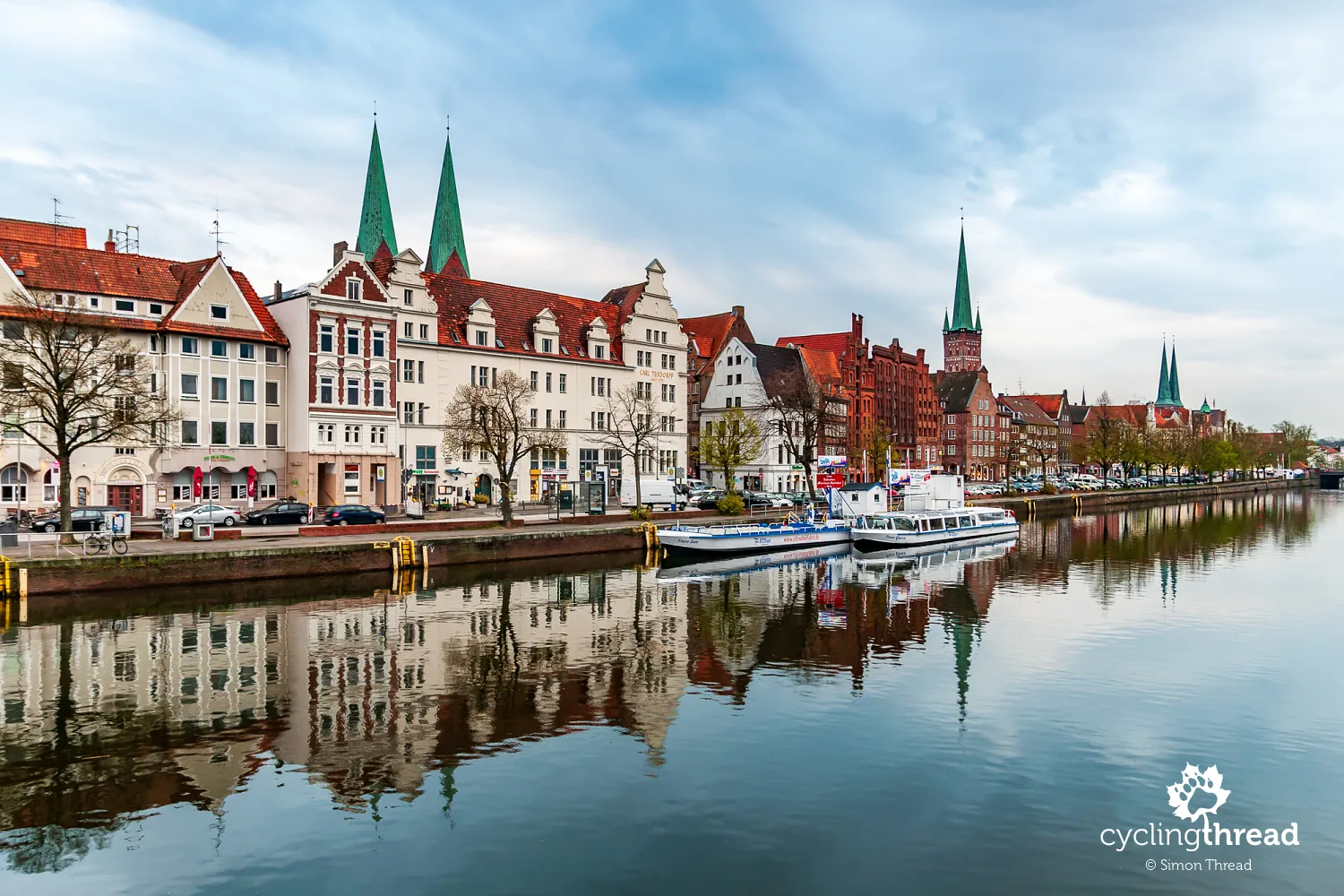
Cycling harmony, the German way
There’s something about cycling in Germany that truly speaks to us. It’s a sense of harmony that matches our personalities and what we look for in a biking trip. Germany combines top-tier infrastructure and services with genuine care for nature. They manage to preserve their natural beauty - something we value deeply and always seek out when we travel. No wonder we’re writing about it in the context of EuroVelo 10, as this route tops the list of the cycling routes in Germany we’ve explored so far. It’s a beautiful, scenic, and engaging journey that left us wanting more.
Back to topHave a safe ride! 💚
Simon Thread
(Szymon Nitka)
I'm a passionate cycling traveler and the voice behind Cycling Thread. I explore Europe on two wheels, documenting the most scenic routes, inspiring places, and cyclist-friendly practices. My writing blends personal experience with practical insights and a deep love of travel. I'm also a contributor to National Geographic Traveler magazine.




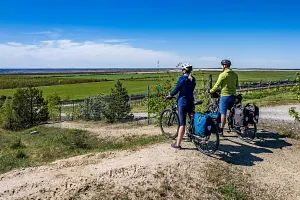
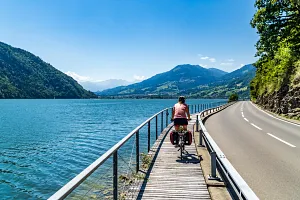

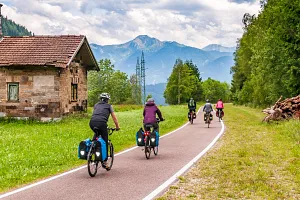

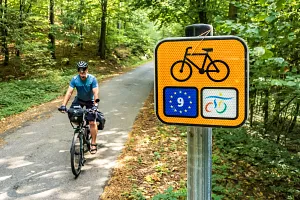

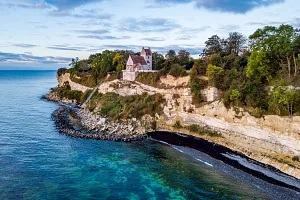
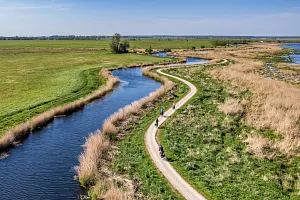

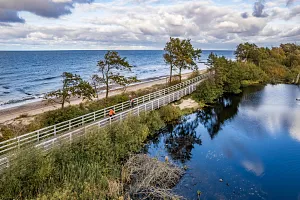

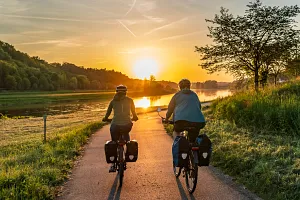
Your Comments
Add new comment